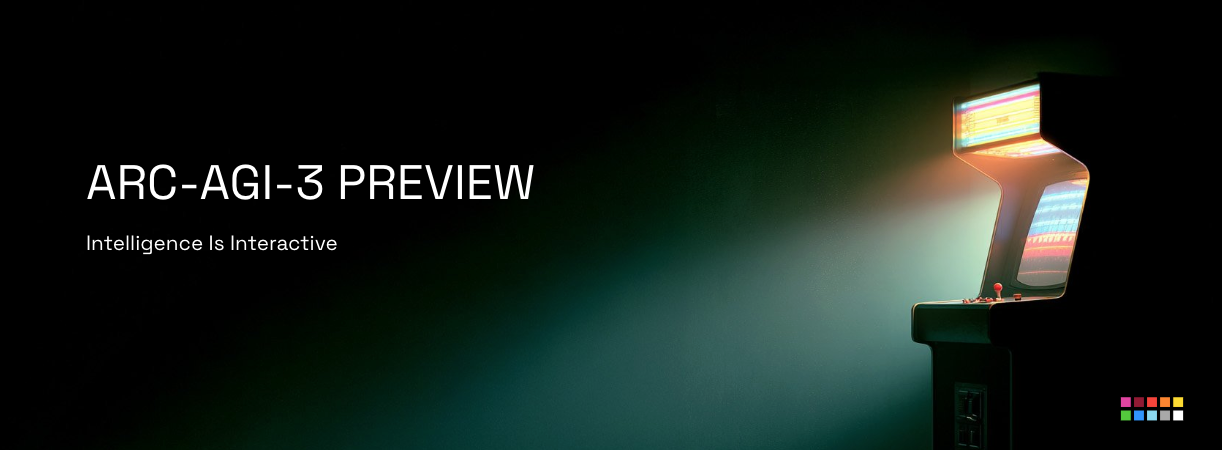
On July 17, we released a sneak peek of ARC-AGI-3, our first Interactive Reasoning Benchmark. These three preview games were our first contact with reality using a new format: video-game-like environments where agents and humans must perceive, plan, and act across multiple steps to achieve long-horizon goals.
Our goal was to gather data about human performance, learn how well AI systems perform on interactive tasks, and see how the community would engage with this new style of evaluation. To encourage further development, we hosted an ARC-AGI-3 Preview Agent competition.
30-Day takeaways:
Interactive benchmarks are easy (even fun) for humans, but hard for AI
Most humans beat the games, often enjoying them. Persistent test-takers "speed ran" to theoretical minimums. AI agents struggled to efficiently make progress.
Some preview games were too friendly to random search
A few game designs could be brute-forced without reasoning. What we learn will help make future games more resistant to brute force and more reflective of intelligence.
Action efficiency provides a clear intelligence signal
Measuring how efficiently environment information is converted into strategy reveals a clear divide between human-level and AI-level performance.
Traditionally, to measure intelligence, static benchmarks have been the yardstick. However, Interactive Reasoning Benchmarks (IRBs) test for a broader scope of capabilities:
We released ARC-AGI-3 Preview to put these core design principles into action.
When compared to static benchmarks, instead of asking, "Can the test-taker recall the right answer?" interactive benchmarks ask, "Can they explore, learn, plan, and adapt when dropped into an entirely new environment?"
Interactive benchmarks also offer something static benchmarks cannot: action efficiency.
Instead of just checking whether a goal is reached, we can measure how many actions it takes to get there. In other words, we're tracking how efficiently a test taker converts information from the environment into a working strategy.
Inspired by Francois Chollet's On the Measure of Intelligence, this gives us a new way to define efficiency, and by extension, intelligence, as the conversion ratio between environment information and agent behavior.
This new metric is not a nice to have, it is foundational to measuring performance of frontier models and intelligence in general. Intelligence is efficiency.
ARC-AGI-3 will be a set of hand-crafted novel, unique environments that are designed to test the skill-acquisition efficiency of artificial systems as compared to humans.
It will rely on previous ARC-AGI pillars (core priors, excluding reliance on language, trivia, or vast training data) to evaluate performance against human baselines.
The first three games released were meant to demonstrate a spectrum of game types. Some are agent based (moving around a single object on screen), while others are orchestration based (viewing and manipulating multiple objects at once).
Preview games released
| Game | Type | Description |
|---|---|---|
| ls20 | Agentic, map based | Navigate a map while bringing a matching symbol to another object. The symbol must go through various transformations in order for it to reach the goal. |
| ft09 | Non-agentic, logic | Match the pattern seen on the screen. Patterns occasionally overlap. |
| vc33 | Orchestration | Alternate volume of objects in order to match levels to pre-specified heights. |
| Private Game #1 | — | To be released |
| Private Game #2 | — | To be released |
| Private Game #3 | — | To be released |
The three private games used as a hidden holdout set for the ARC-AGI-3 Preview Agent Competition will be released in the coming weeks.
Since the Preview launch, over 1,200 people have played more than 3,900 ARC-AGI-3 games.
To measure how efficiently humans play, we've adopted a scoring framework inspired by work from Josh Tenenbaum's lab, Human-Level Reinforcement Learning through Theory-Based Modeling, Exploration, and Planning.
The method is straightforward, track the number of actions taken to complete each level, then plot how that effort accumulates over time. This makes it easy to compare performance, not just between two humans, but more importantly, between humans and AI (more on this later).
We were also inspired by Shortest Path Length algorithms (such as Dijkstra's and A*) which focus on two questions: 1) Did the agent complete its goal? 2) How efficiently did it do it?
When this framework is used on ARC-AGI-3, we get a view of level progression vs action count. It may look like a simple chart, but it reveals a lot! Here's an example of human test data from, vc33, a public preview game.
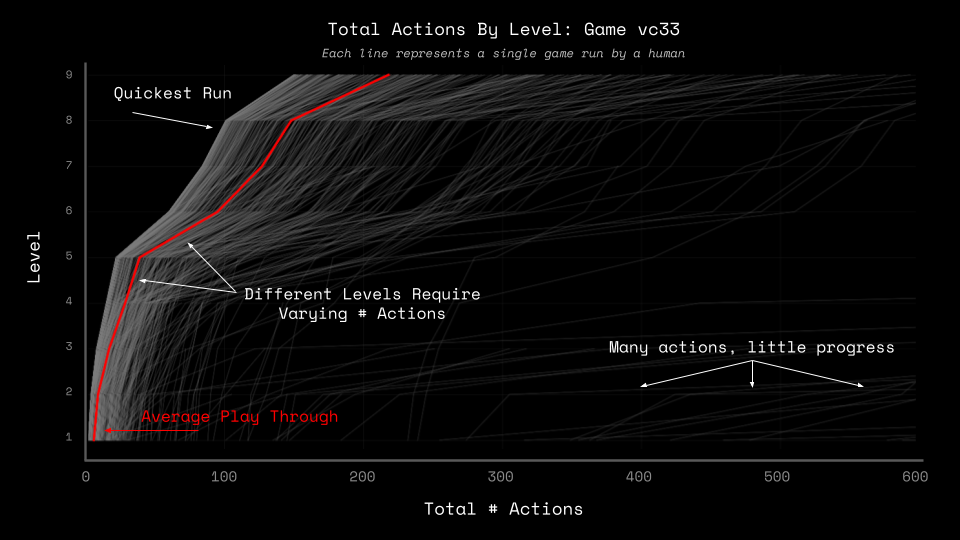
What we can learn from this chart:
Expanding this view to all 3 public games, we can start to see each game's unique characteristics.
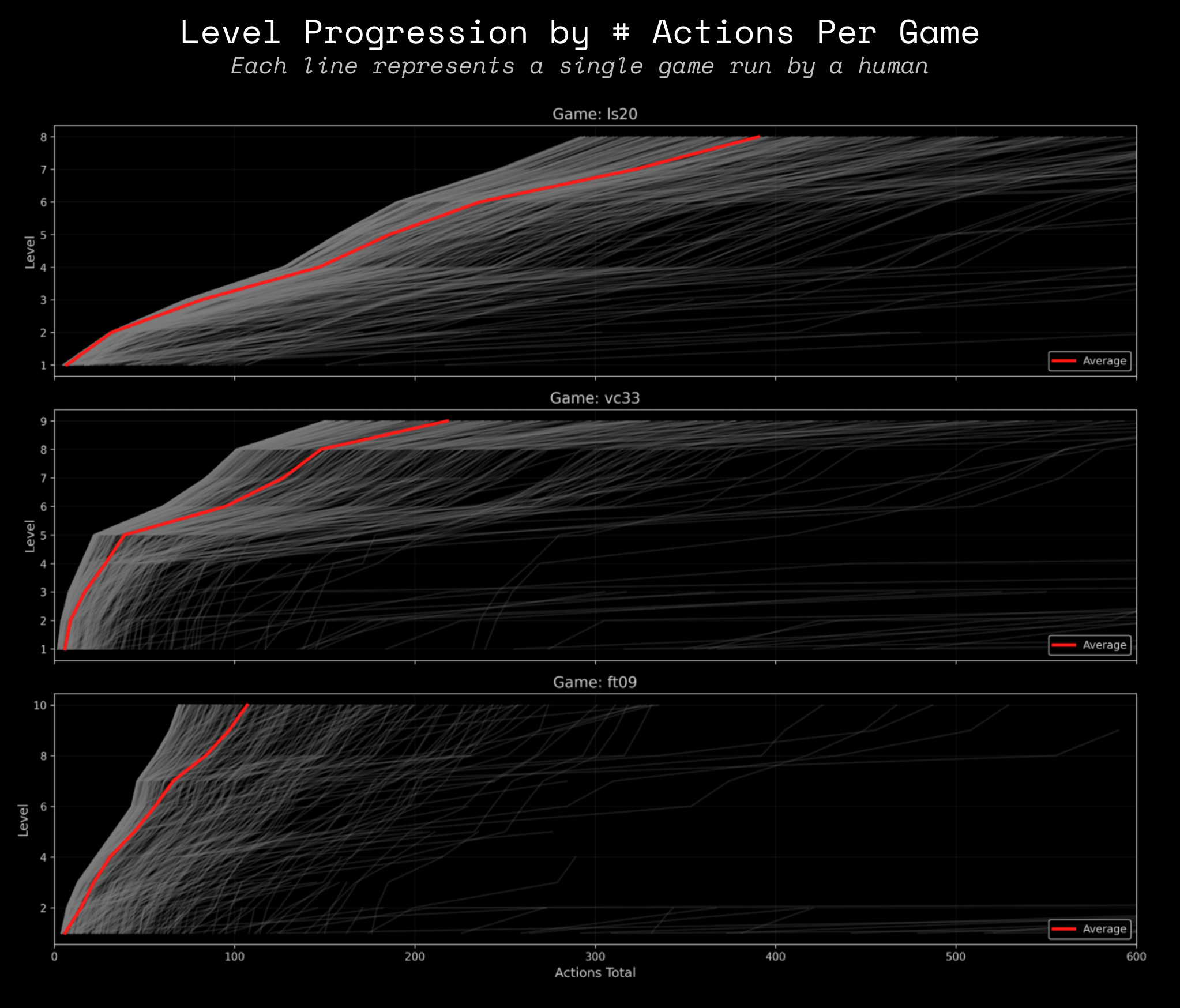
When measuring human performance, we only count a player's first run on a game to compare with AI's first run to measure learning efficiency, not memorization.
The dataset shown above comes from authenticated users. We can't guarantee that their first game run was truly their first time playing. Some may have played the game anonymously before logging in. So although this data is useful to understand action variability per level & game, it will not be used for standardized scoring.
For the production launch of ARC-AGI-3, we will rely on controlled human study of >200 participants to determine baselines.
Using this scoring framework, we can directly compare human and AI performance on a per-level basis by using action efficiency.
As a test-taker plays a game, they "spend" action in two ways:
Every player, human or AI, must use exploratory actions before executing a strategy. Humans are generally good at this: they explore briefly, then execute successfully. Random brute-force agents, however, may eventually complete a level but require far more actions. They aren't effective at turning information from the environment into a workable strategy.
To understand how well AI is doing relative to humans, we can see how many actions it takes an agent to complete a level as a percent of how many actions it takes a human to do the same.
This sets the stage for our scoring framework:
Score agents by their per-level action efficiency (as compared to humans), normalized per game, across all games.
Broken down:
Alongside the launch of the first ARC-AGI-3 Preview games, we launched an Agent Preview Competition with the goal of incentivizing the collective intelligence of the community to build. By putting ARC-AGI-3 Preview into the hands of developers, we could test our game and API design early before scaling up development for the full benchmark.
In partnership with Hugging Face, who generously sponsored the competition, we released the first version of our API. Developers could train and test their agents on the public set.
Our aim was to discourage overfitting and reward generalization. The competition would be judged based off the agent's performance on 3 additional private games.
The competition ran for 30 days, open to anyone worldwide. In the end, we received 12 submissions, with 8 tested against the private games. Scores were computed using prelimary results from human testing in the scoring framework above.
1st Place: StochasticGoose @ Tufa Labs: Score: 12.58%, Levels Completed: 18
Convolutional Neural Network Action-learning agent. It uses a simple reinforcement learning approach to predict which actions will cause frame changes, enabling more efficient exploration than random selection. Lead Developer: Dries Smit, Adviser/Reviewer: Jack Cole. Blog Recap:
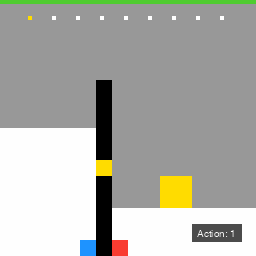
2nd Place: Blind Squirrel: Score: 6.71%, Levels Completed: 13
Explore-and-learn agent that builds a state graph from frames. It prunes actions that create loops or don't change state. Whenever the score improves, it back-labels that level with distances and retrains a small ResNet18-based value model to rank (state, action) pairs toward the next milestone, then repeats until win or cap. Developer: Will Dick. Blog Recap
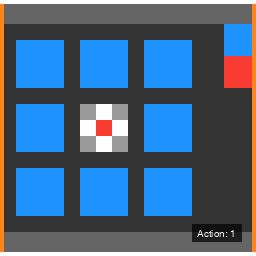
Honorable Mentions
Top Submissions
| Agent | Team | Type | Score | Games Completed | Levels Completed | Actions | Replays |
|---|---|---|---|---|---|---|---|
| StochasticGoose | Dries Smit - Lead Developer Jack Cole - Advisor Review | Smart Random (CNN) | 12.58% | 2 | 18 | 255,964 |
ft09 ls20 vc33 |
| Blind Squirrel | Will Dick | Smart Random (Rules) | 6.71% | 1 | 13 | 109,108 |
ft09 ls20 vc33 |
| Explore It Till You Solve It | Evgenii Rudakov (Developer) | Smart Random (Frame Graph) | 3.64% | 0 | 12 | 278,158 |
ft09 ls20 vc33 |
| GuidedRandomAgent | Bob | Smart Random (Rules) | 2.24% | 1 | 11 | 39,881 |
ft09 ls20 vc33 |
| Fluxonian | Ujjwal Chadha (Engineer) Maya Nguyen (Engineer) Shobhit Singhal (Engineer) Filip Dominas (TPM) | DSL + LLM | 8.04% | 0 | 5 | 11,890 |
ft09 ls20 vc33 |
| Play Zero Agent | Dhana Abhiraj (Developer) | Random + LLM Video | 4.37% | 0 | 5 | 7,226 |
ft09 ls20 vc33 |
| Tomas Engine | Cristian Valdivia (Developer) - Blog Post Recap | LLM - Limited Results, Crashed Often | 3.70% | 0 | 1 | 79 |
ft09 ls20 vc33 |
Notes:
Based on preview feedback, we're shipping several practical improvements today, and more later with the full benchmark release:
The ARC-AGI-3 competition is wrapped but the preview is still live!
Three games are now available on three.arcprize.org, and we encourage you to keep building.
There are plenty of ways to get involved with ARC-AGI-3:
Play, build, train, and help us create the future of machine intelligence benchmarking.